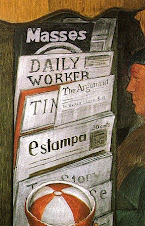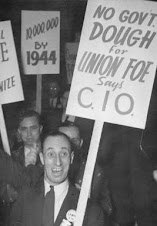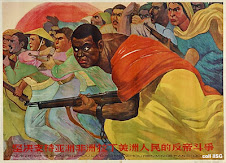By Dianne Mathiowetz
Atlanta
Published Dec 23, 2010 12:13 AM
What conclusions or lessons can be drawn from the historic Georgia prisoners’ strike that lasted close to a week and involved as many as 10 institutions across the state?
One of the most remarkable elements of the job action by prisoners who refused to continue working for free was the broad unity among Black, Latino, white, Muslim, Christian, Rastafarian and other groups.
The active promotion of divisions among inmates through favored treatment, rumor-mongering and directed violence to one group or another is standard operating procedure by prison authorities. Although most people readily understand that the vast majority of people incarcerated in the U.S. are poor and quite often are people of color, the recognition that prisoners are workers too is less apparent to many of the public.
Yet the Georgia prisoners’ first demand was that they be paid for their labor; that they were not slaves or animals to be worked without remuneration or human dignity. This is a profound message sent by the most exploited members of the working class, denied by law from receiving any wages for their labor.
The sheer audacity of using contraband cell phones to plan, organize and mobilize a synchronized “lock down for liberty” in statewide facilities speaks to the ingenuity and skills of these men. Although most of these phones are supplied by guards at a high price to inmates, it is a felony for a prisoner to have an unauthorized phone in Georgia. During the week-long strike, as prisoners remained in their cells, refusing to come out, it was through these phones that they were able to communicate with each other, media outlets and supporters on the outside.
Although the corporate media, particularly the major TV news stations, largely ignored the strike, alternate media such as Democracy Now and Hard Knock Radio, as well as Black Agenda Report, provided extensive coverage day by day.
Former chair of the Black Panther Party and long-time prisoner rights’ advocate Elaine Brown, who acted as a voice for the strikers, was interviewed extensively. The Internet petition initiated by the International Action Center generated tens of thousands of emails supporting the strikers’ demands and calling for no reprisals.
Solidarity demonstrations took place in several cities including Detroit; Oakland, Calif.; Richmond, Va.; Denver; Raleigh, N.C.; and New York City. Messages of support came from people around the globe, including prisoners in other countries. It is fair to say that the Georgia prisoners’ strike brought a measure of worldwide solidarity and attention to the deplorable conditions commonplace in U.S. prisons, in a way not seen since the upstate New York Attica rebellion in 1971, almost 30 years ago.
In fact, the manifesto released by the Attica prisoners, declaring they were “men not animals,” and detailing demands for access to health care and educational opportunities, the end to arbitrary punishment and brutal guards, decent living conditions and the right to unionize are echoed in similar demands made by the Georgia strikers.
In truth there have been many struggles by prisoners in the intervening years that exposed the inhuman policies and practices deemed normal or acceptable for those convicted of a “crime.” Quite often, these actions were labeled “riots,” involving the spontaneous seizure of a cellblock or taking of hostages following some instance of guard brutality. Most often, the state employed immediate, massive violence to regain control of the prison, resulting in injury, death or increased sentences for those involved. Little to no publicity was given to the prisoners’ grievances.
Prisoners need ongoing solidarity
In contrast, the Georgia prisoners’ strike released a list of nine demands just before the action took place on Dec. 9. The prisoners had a unified plan of action agreed to by the leadership within prison society. They had stockpiled foodstuffs, knowing there would be no meals. They deliberately chose a time later in the year when the temperatures would not be sweltering in their closed-in and overcrowded cells.
Unfortunately, the strike occurred during a most unseasonable cold snap that caused temperatures to plummet below freezing in parts of Georgia. But the determined strikers endured. They had a diffused and publicly unidentified leadership which prevented immediate removal of their spokespeople. In other words, this was a most carefully conceived and executed plan to deliver a list of concrete demands drawn from their experience as workers and their insistence on human dignity.
Although the strike was declared over and the Department of Corrections preemptive lockdown of four prisons ended on Dec. 16, reports continue to come out that some prisoners are still refusing to go to their work assignments. There are persistent accounts that a number of inmates have been sent to the “hole” or transferred to unknown locations. One possible transfer site mentioned in continuing phone calls from inside the walls is Reidsville, the state’s maximum security prison where Georgia’s death row is located. Physical retaliation against some prisoners has been claimed.
On Dec. 17 representatives of the Concerned Coalition to Protect Prisoners Rights met with the Department of Corrections to press for action on the strikers’ demands. The coalition, made up of the NAACP and the Nation of Islam, among other community organizations, reported no positive results from the meeting but pledged to continue their support for the strike’s demands.
The need for continued solidarity action is critical. These striking workers did no harm to anyone. They employed a time-honored tactic of workers everywhere — withholding their labor to press their demands. For a week, they prepared no meals, scrubbed no floors, made no license plates or furniture. The truth is whether in a prison, on a factory assembly line, at a computer or behind a store counter, nothing is produced, transported, distributed or serviced without the labor of a worker.
The full impact of the Georgia prisoners’ strike is yet to be seen. Will others adopt similar strategies and tactics? In many states, huge corporations like BP, TWA, Compaq, JCPenny, Best Western Hotels, Honda, Chevron, IBM, Microsoft, Victoria’s Secret and Boeing, to name a few, employ thousands of prisoners, especially in call-in centers, paying on average 40 cents an hour.
This growing phenomenon of a captive workforce is a dream come true for many a capitalist. But as Karl Marx and Frederick Engels described in “The Communist Manifesto” and the Georgia prisoners’ strike showed, class conscious and organized workers — be they inside or outside the prison walls — are the “specter haunting” this exploitive, profits-before-people system of capitalism.
To sign the online petition and contact prison authorities, go to www.iacenter.org.
Articles copyright 1995-2010 Workers World. Verbatim copying and distribution of this entire article is permitted in any medium without royalty provided this notice is preserved.
Subscribe to:
Post Comments (Atom)










































No comments:
Post a Comment